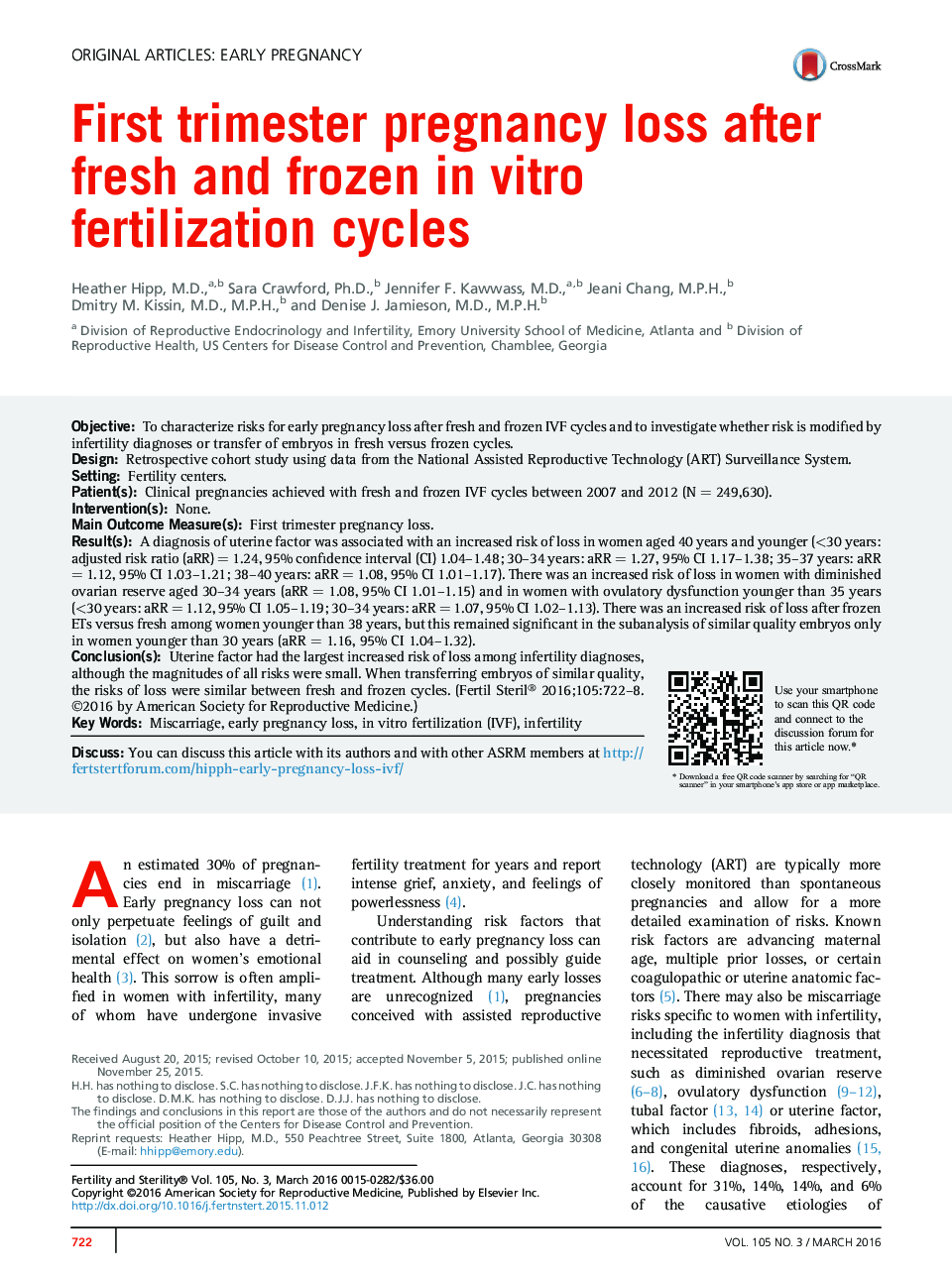| Article ID | Journal | Published Year | Pages | File Type |
|---|---|---|---|---|
| 6179695 | Fertility and Sterility | 2016 | 7 Pages |
ObjectiveTo characterize risks for early pregnancy loss after fresh and frozen IVF cycles and to investigate whether risk is modified by infertility diagnoses or transfer of embryos in fresh versus frozen cycles.DesignRetrospective cohort study using data from the National Assisted Reproductive Technology (ART) Surveillance System.SettingFertility centers.Patient(s)Clinical pregnancies achieved with fresh and frozen IVF cycles between 2007 and 2012 (N = 249,630).Intervention(s)None.Main Outcome Measure(s)First trimester pregnancy loss.Result(s)A diagnosis of uterine factor was associated with an increased risk of loss in women aged 40Â years and younger (<30Â years: adjusted risk ratio (aRR) = 1.24, 95% confidence interval (CI) 1.04-1.48; 30-34Â years: aRR = 1.27, 95% CI 1.17-1.38; 35-37Â years: aRR = 1.12, 95% CI 1.03-1.21; 38-40Â years: aRR = 1.08, 95% CI 1.01-1.17). There was an increased risk of loss in women with diminished ovarian reserve aged 30-34Â years (aRR = 1.08, 95% CI 1.01-1.15) and in women with ovulatory dysfunction younger than 35Â years (<30Â years: aRR = 1.12, 95% CI 1.05-1.19; 30-34Â years: aRR = 1.07, 95% CI 1.02-1.13). There was an increased risk of loss after frozen ETs versus fresh among women younger than 38Â years, but this remained significant in the subanalysis of similar quality embryos only in women younger than 30Â years (aRR = 1.16, 95% CI 1.04-1.32).Conclusion(s)Uterine factor had the largest increased risk of loss among infertility diagnoses, although the magnitudes of all risks were small. When transferring embryos of similar quality, the risks of loss were similar between fresh and frozen cycles.
